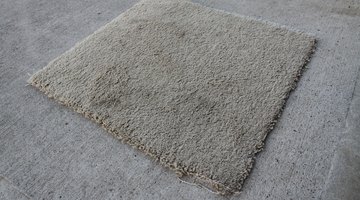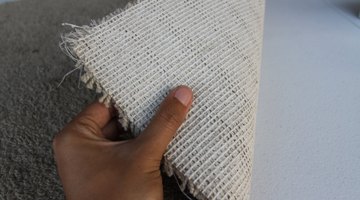How to Cut Carpet
Whether you're ready to try your hand at carpet installation or you simply want to use an existing remnant to make your own area rug, cutting the carpet is a huge part of the job. Using the right type of cutters for the project at hand makes it a lot more enjoyable and ensures the cuts turn out as expected.

A few carpet-cutting techniques in your arsenal of skills allows you to cut both straight edges and tricky shapes with confidence.
Flip It

When it comes to cutting carpet of any type, flipping it over first makes the job immensely easier. The backing is flat, keeping what you're doing completely visible, while carpet fibers may be thick or nubby, hindering or moving the knife as you try to cut a straight line. Place a long straightedge down to draw a marker line on the back of the carpet where a straight cut is required, and then keep the straightedge on that line as you make the cut. Use sharp utility knife, which is key to making a clean cut; you may need to change the blade several times during a large carpet project.
Fun With Shapes

In some cases, such as when making your own carpet or a patterned rug, your design requires unusual shapes -- a cloud-shaped rug for a child's room or your own homemade two-tone zebra print area rug, for instance. Draw the shape you wish to create on the back of the carpet using a permanent marker. If the shape requires intricate, detailed cuts, make a template from corrugated cardboard as a guide for the knife. Place the template down, if you're using one, along the design. Cut it out slowly using the tip of the utility knife. Making slow, tiny cuts works well for short spans with many turns or angles. If the knife isn't cutting well, replace the blade or shorten it in the knife for better leverage, so only a bit more than the tip sticks out.
Working Near Walls and Doors

While a utility knife could be used to trim excess carpet as you reach walls or other straight obstructions, it's not the most efficient tool for the job. A double-blade wall trimmer is designed specifically to trim that excess carpet flap at the end of the room. This tool has a flat plate that rests against the ground, and a handle on top for manipulation. Press it against the corner of the carpeting that requires the cut along a wall or obstruction, and slide it along to slice the carpeting perfectly. The trimmer also has a guide bar to help tuck carpeting under trim at the bottom of the wall.
Accurate Measurements

No matter how good you are at cutting the carpet, an inaccurate measurement may mean the carpeting doesn't reach as far as it needs to, so you'll have to splice in a patch or start all over. Measure a room from its widest point -- while you may think the walls are perfectly straight, there's a chance they are not. Measure both the width and length from several places, writing down the longest measurement. Include any closets, if they're being carpeted as well. Round everything up to the nearest foot to ensure there's plenty of extra material to work with -- trimming is easier than patching. Measure from door to door rather than wall to wall in a room with doors, because doors are typically set back a bit farther than the walls. You could end up with a gap in the carpeting near the doors if the wall-to-wall measurement is used.
The Drip Cap
- Whether you're ready to try your hand at carpet installation or you simply want to use an existing remnant to make your own area rug, cutting the carpet is a huge part of the job.
- Place a long straightedge down to draw a marker line on the back of the carpet where a straight cut is required, and then keep the straightedge on that line as you make the cut.
- While a utility knife could be used to trim excess carpet as you reach walls or other straight obstructions, it's not the most efficient tool for the job.
- No matter how good you are at cutting the carpet, an inaccurate measurement may mean the carpeting doesn't reach as far as it needs to, so you'll have to splice in a patch or start all over.
- Measure a room from its widest point -- while you may think the walls are perfectly straight, there's a chance they are not.
- Round everything up to the nearest foot to ensure there's plenty of extra material to work with -- trimming is easier than patching.
References
Resources
Writer Bio
Kathy Adams is an award-winning writer. She is an avid DIYer that is equally at home repurposing random objects into new, useful creations as she is at supporting community gardening efforts and writing about healthy alternatives to household chemicals. She's written numerous DIY articles for paint and decor companies, as well as for Black + Decker, Hunker, Landlordology, SFGate and others.
Photo Credits
- Bryan Tobing/Demand Media
- Bryan Tobing/Demand Media
- Bryan Tobing/Demand Media
- Bryan Tobing/Demand Media
- Bryan Tobing/Demand Media
- Bryan Tobing/Demand Media
More Articles



